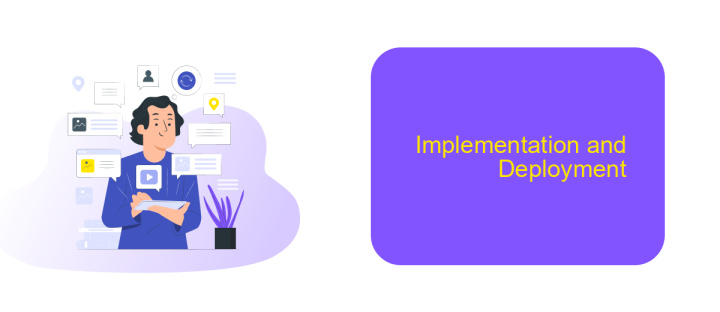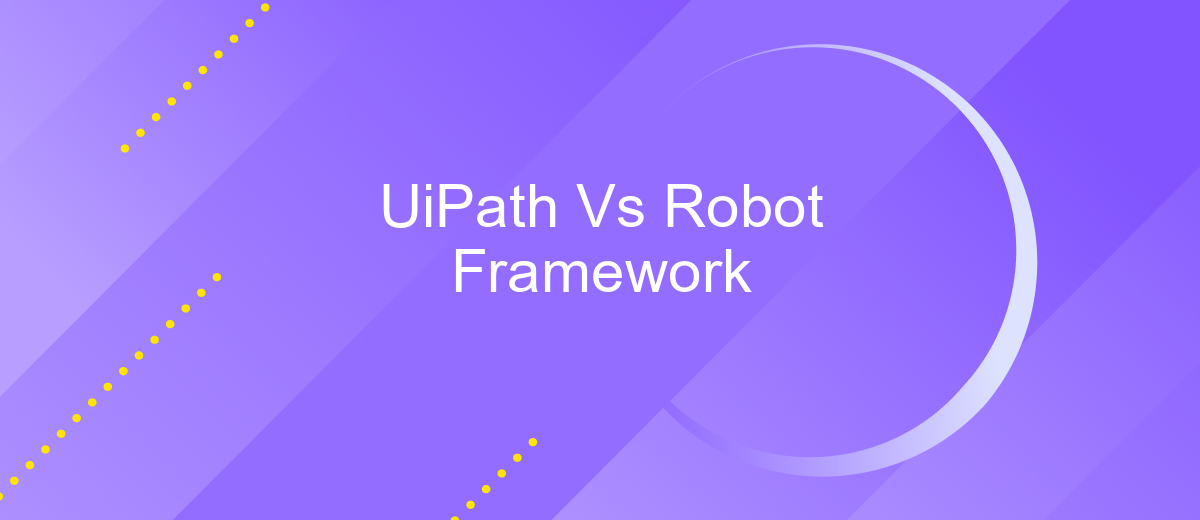UiPath Vs Robot Framework
When it comes to automating repetitive tasks, UiPath and Robot Framework are two prominent tools that often come into consideration. Both offer unique features and capabilities, making them suitable for different automation needs. This article delves into a comparative analysis of UiPath and Robot Framework, highlighting their strengths, weaknesses, and ideal use cases to help you make an informed decision.
UiPath vs Robot Framework: A Comprehensive Comparison
When comparing UiPath and Robot Framework, it's essential to understand their unique strengths and use cases. UiPath is a leading RPA tool known for its user-friendly interface and extensive integration capabilities, making it ideal for business process automation. On the other hand, Robot Framework is an open-source automation framework that excels in test automation and is highly extensible through libraries.
- Ease of Use: UiPath offers a drag-and-drop interface, while Robot Framework requires scripting knowledge.
- Integration: UiPath supports numerous integrations out-of-the-box, whereas Robot Framework relies on custom libraries and tools like ApiX-Drive for seamless integration.
- Cost: UiPath is a commercial product with licensing fees, while Robot Framework is free and open-source.
- Community Support: Both have active communities, but UiPath offers more extensive official support and resources.
In summary, UiPath is better suited for businesses looking for a comprehensive RPA solution with minimal coding, whereas Robot Framework is ideal for those focusing on test automation and willing to invest in custom development. Choosing between them largely depends on your specific needs and technical expertise.
Introduction

In the rapidly evolving field of robotic process automation (RPA), choosing the right tool can significantly impact the efficiency and success of your automation projects. Two prominent contenders in this space are UiPath and Robot Framework. Both platforms offer unique features and capabilities that cater to different automation needs, making it essential to understand their strengths and weaknesses before making a decision.
UiPath is renowned for its user-friendly interface and extensive integration capabilities, making it a popular choice for organizations looking to streamline their workflows with minimal coding effort. On the other hand, Robot Framework excels in flexibility and is highly favored by developers for its open-source nature and robust scripting options. Additionally, services like ApiX-Drive can enhance the integration process for both platforms, providing seamless connectivity between various applications and systems. This article aims to provide a comprehensive comparison of UiPath and Robot Framework, helping you determine which tool best aligns with your automation goals.
Key Features Comparison

When comparing UiPath and Robot Framework, it’s essential to understand their key features to determine which tool best suits your automation needs. Both platforms offer unique capabilities that cater to different aspects of robotic process automation (RPA).
- Ease of Use: UiPath provides a user-friendly interface with drag-and-drop functionalities, making it accessible for non-developers. Robot Framework, on the other hand, requires scripting knowledge, which may be a barrier for beginners.
- Integration Capabilities: UiPath boasts extensive integration options with various third-party applications and services. For seamless integrations, ApiX-Drive can be utilized to connect UiPath with other tools effortlessly. Robot Framework also supports integrations but often requires more manual configuration.
- Community and Support: UiPath has a large and active community, offering abundant resources and support. Robot Framework also has a dedicated community, but it is relatively smaller compared to UiPath.
In summary, UiPath and Robot Framework each have strengths that cater to different user needs. UiPath is ideal for those seeking ease of use and extensive integration options, while Robot Framework is better suited for users with strong scripting skills and a preference for open-source solutions.
Implementation and Deployment

When it comes to implementation and deployment, UiPath and Robot Framework offer distinct approaches tailored to different needs. UiPath provides a user-friendly interface with drag-and-drop functionality, making it accessible for users with varying levels of technical expertise. The platform supports seamless integration with various applications and services, including popular APIs through tools like ApiX-Drive, simplifying the automation of complex workflows.
On the other hand, Robot Framework is an open-source automation tool that relies on keyword-driven testing, which requires a more technical understanding. It is highly extensible and integrates well with other testing tools and libraries, making it a preferred choice for developers who need flexibility and customization. Deployment in Robot Framework often involves setting up a robust environment with necessary dependencies and configuring scripts to run efficiently.
- UiPath: User-friendly interface, drag-and-drop functionality, easy integration with ApiX-Drive.
- Robot Framework: Keyword-driven testing, high extensibility, requires technical expertise for setup.
Ultimately, the choice between UiPath and Robot Framework depends on the specific requirements of the project and the technical proficiency of the team. UiPath is ideal for rapid deployment and ease of use, while Robot Framework offers greater flexibility and control for those who need a more customizable solution.
Advantages and Disadvantages
UiPath offers a user-friendly interface and extensive integration capabilities, making it ideal for businesses looking for a quick setup and deployment. Its drag-and-drop feature simplifies the automation process, requiring minimal coding skills. However, UiPath can be expensive for small and medium-sized enterprises, and its licensing costs might be a barrier for some. Additionally, while it supports a wide range of applications, its reliance on Windows can limit cross-platform flexibility.
On the other hand, Robot Framework is an open-source tool, making it a cost-effective solution for many organizations. It is highly extensible and supports multiple platforms, which enhances its versatility. Nevertheless, Robot Framework requires more technical expertise to set up and use effectively. The initial learning curve can be steep for those unfamiliar with Python or keyword-driven testing. For seamless integration of various services, tools like ApiX-Drive can be employed to bridge gaps and automate workflows efficiently.
FAQ
What is the primary difference between UiPath and Robot Framework?
Which tool is more suitable for non-technical users?
Can both UiPath and Robot Framework be used for web automation?
How do these tools handle integrations with other software?
Which tool has better community and support?
Apix-Drive is a simple and efficient system connector that will help you automate routine tasks and optimize business processes. You can save time and money, direct these resources to more important purposes. Test ApiX-Drive and make sure that this tool will relieve your employees and after 5 minutes of settings your business will start working faster.

